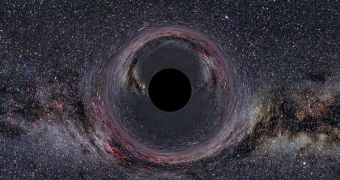Astronomers recently discovered two embryonic stars that are forming within a few light-years of Milky Way's center, which is occupied by a massive black hole. Normally, this type of vicinity is deadly to forming celestial bodies, and scientists believed until now that no new formations could take place within the black hole's range, as it would have most likely dragged all the matter to go into the new star inside.
Apparently, that is not the case, and the pictures taken showed without a doubt that the black hole at the center of our galaxy has little influence on the two forming stars. The large forces generated by the 4 million solar masses-large hole at the center of our galaxy were believed to be too high to allow the formation of gas clouds that usually act as star “nurseries.”
Up until this point, astronomers believed that young stars could only reach the core of a galaxy if they had already formed somewhere else and were dragged inwards by the black hole's intense gravitational pull. But new data, presented at the 213th American Astronomical Society meeting by Elizabeth Humphreys, an expert at the Harvard-Smithsonian Center for Astrophysics in Cambridge, Massachusetts, proved that the stars formed at the spot where they were identified via the use of the Very Large Array of radio telescopes.
"We literally caught these stars in the act of forming," she said at the conference. The research team used infrared and radio wavelengths to peer into the middle of our galaxy, as visible light is thoroughly blocked by dust clouds. Although they were actually looking for water elsewhere in the galaxy, they also discovered the two stars, located 6 and 10 light-years away from the core of our galaxy, respectively. To get a perspective, our solar system is some 26,000 light-years away from the center of the Milky Way.
The only way these stars could form in the unfriendly region, astronomers say, is if the gas clouds that reside there are far more dense than previously thought. That, coupled with the fact that just recently we've learned that our galaxy is actually twice as dense, bulkier and faster than we knew, proves the limited range of knowledge we actually have about the deep space around us.

 14 DAY TRIAL //
14 DAY TRIAL //